We asked Natalie Clifton, Exhibits Manager at the River Museum, to share their experience throughout the renovation process as one of the leads bringing the concepts to life!
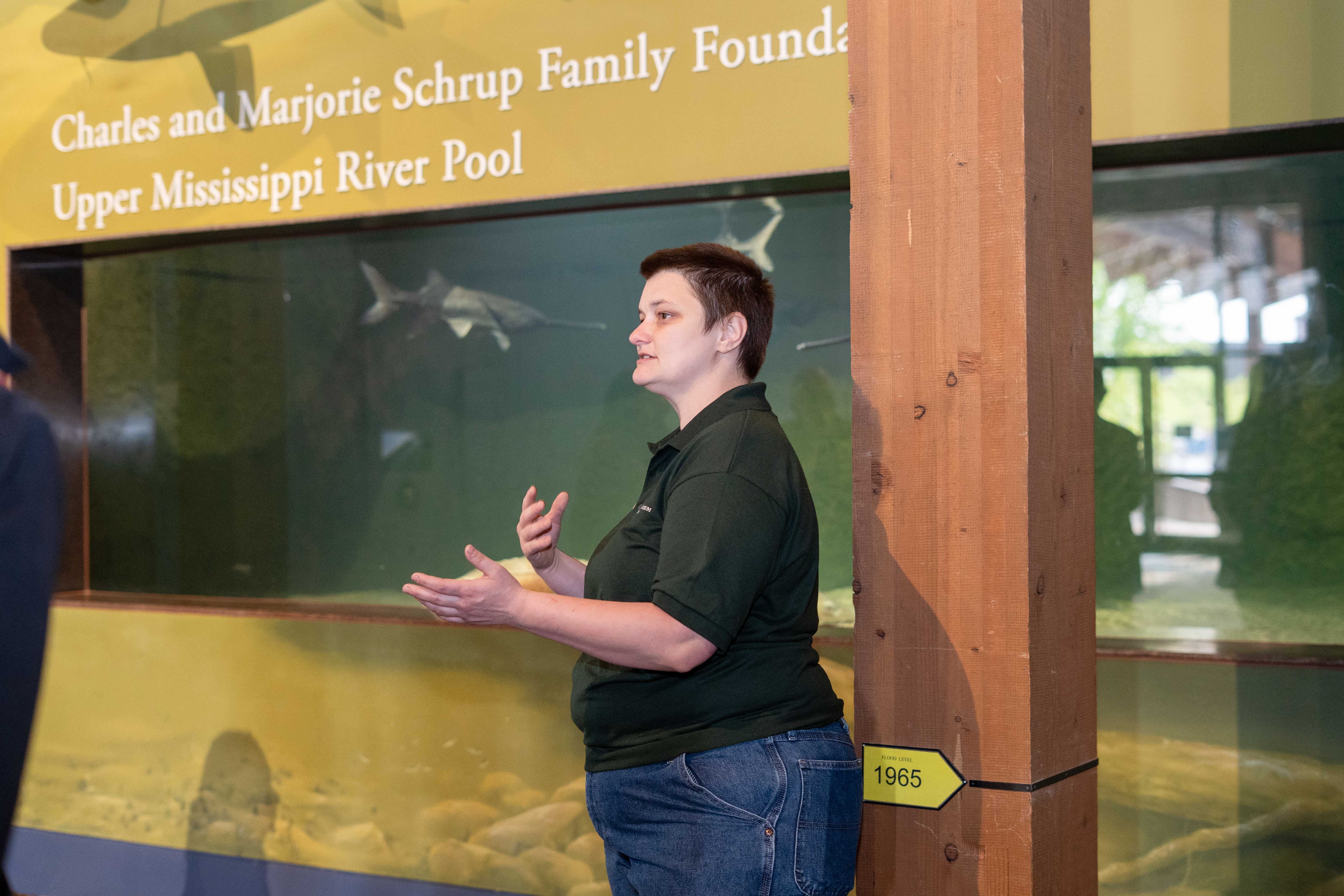
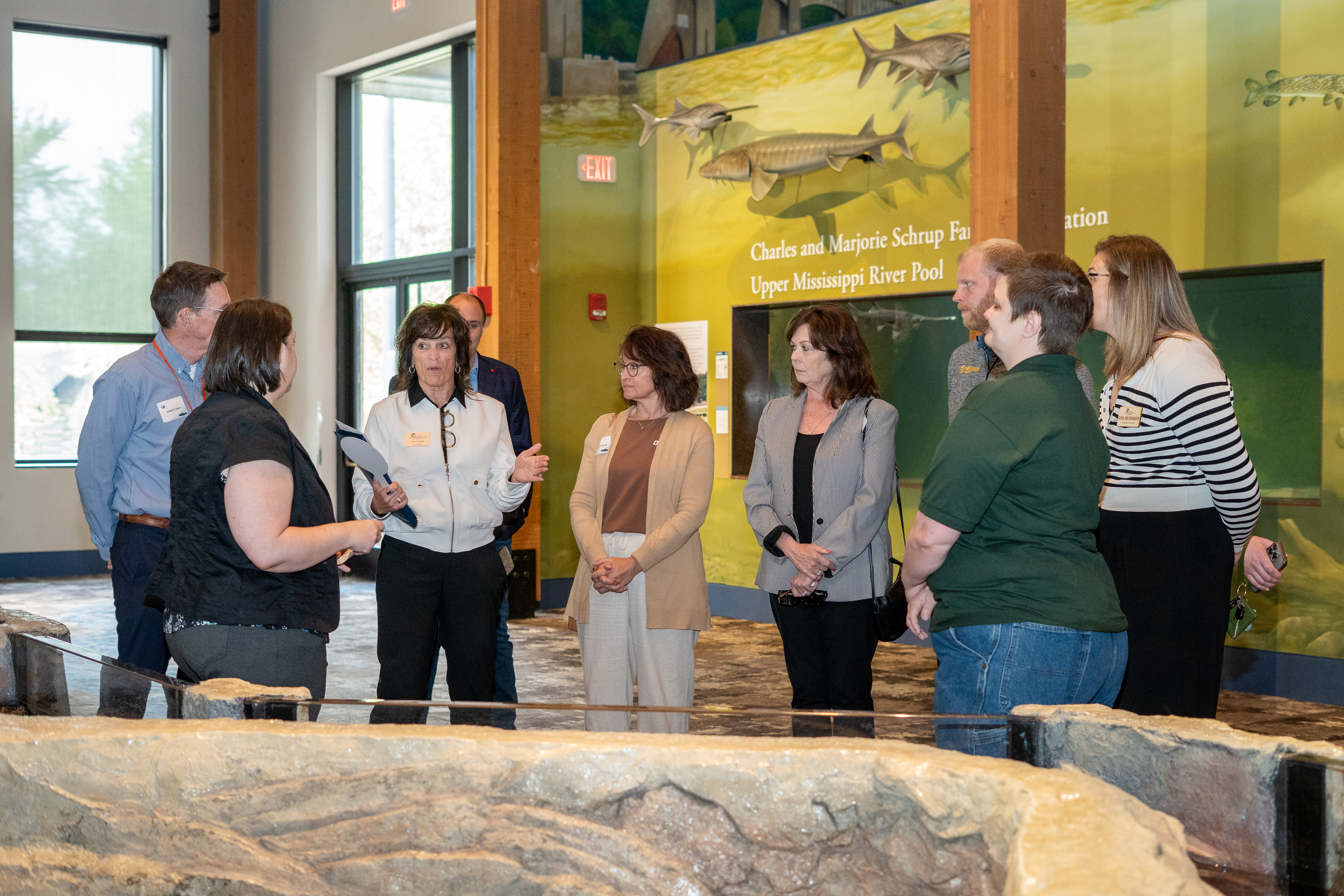
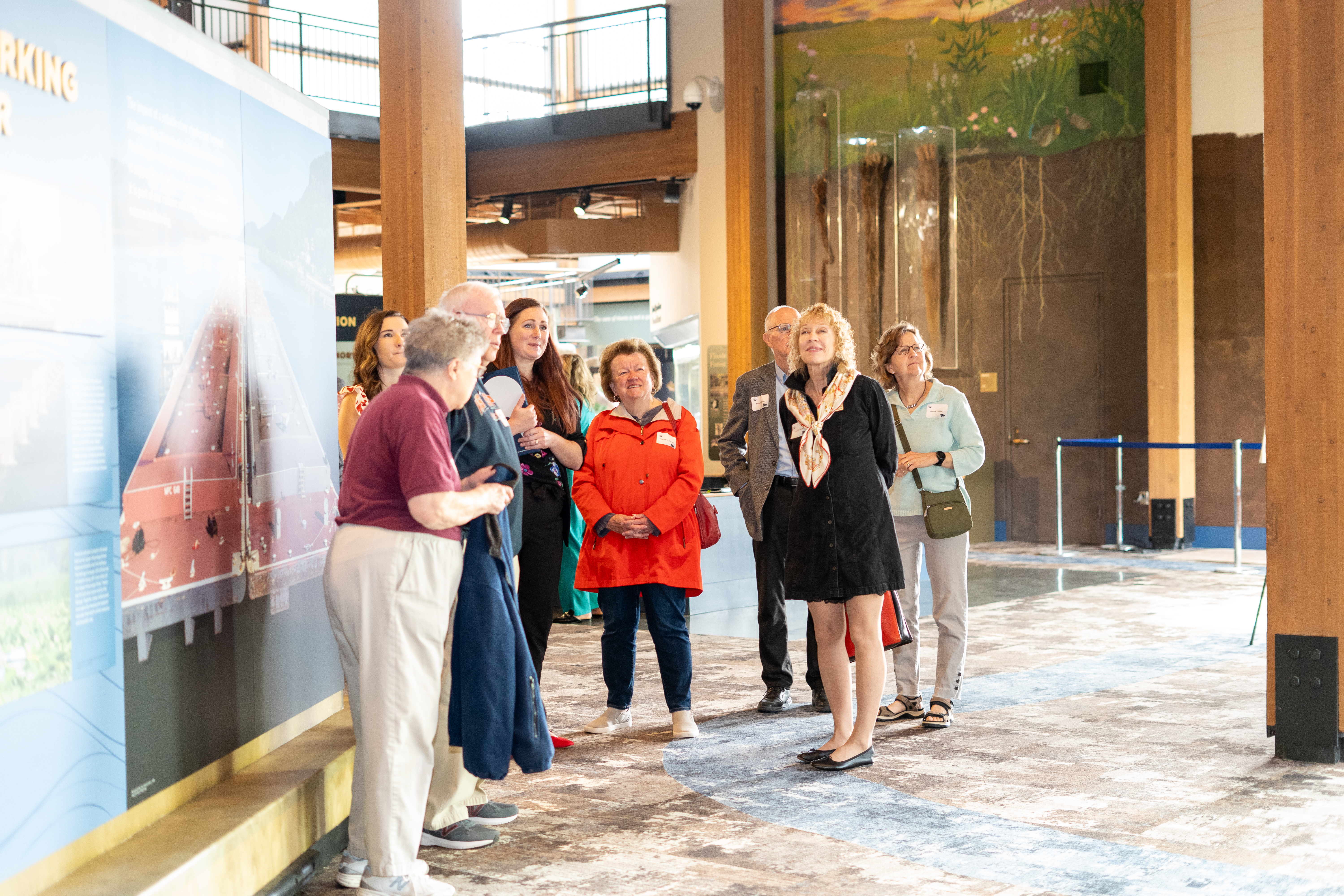
Can you describe the William Woodward Mississippi River Center (MRC) renovations and how they’re part of Preserve the Wonder?
MRC has been a complete rewrite, almost, of our whole building on the first floor and also a lot of our outdoor spaces. It’s been a huge effort in bringing cohesion to our storyline–as the National Rivers Center (NRC) was bringing cohesion to our Rivers to Sea storyline and how we connect to our broader world, this has been bringing cohesion to how Dubuque connects to the larger Mississippi story. From here in Dubuque all the way down to the Gulf, we’re all connected by this one big band of water, so from starting here, going down to St. Louis, continuing on down that line, each of our new exhibits and refurbished exhibits will actually continue to tell that story in a more cohesive manner.
What is the first step to creating an exhibit from scratch?
The first important thing is the big idea and your end goal. If you have those two ideas, what you want to get out of it and what your kind of big idea is, you can kind of fill it in from there. Let’s say we know we wanted to do an otter [exhibit] upgrade. How do we get there, and what does that look like? That’s where we fill in the middle bit. We knew we wanted more land space because after doing a lot of research, river otters in particular actually are more land-based mammals that like to be on land and then go in the water. Through that research, through studying animals and talking to peers and other zoos and aquariums that actually have done a lot of these studies, that’s kind of how we started building that exhibit in particular.
Can you give some insight into the planning process for the MRC renovations?
We kind of started with weekly meetings, figuring out what our needs were as an organization as well as what our guest’s needs were. We host a lot of educational groups; schools come here all the time. We wanted to make sure we were meeting their needs, too, and not only just guest needs, but what we needed as a facility, as well: life support systems, structural upgrades, architecture. A lot of times, people don’t necessarily want to think about the day-to-day nitty gritty, but that’s always important, too, so we had to start thinking about the things we had to do to make this happen. We knew we wanted to, and needed to, upgrade otters. We knew adding this aviary was critical: many species actually need permanent homes, and this is what we can offer for species that are rescued or have nowhere else to go. So we knew that’s something we wanted to do as part of our conservation work. We continued that story inside too, with the Wyoming toads and our Saving Animals From Extinction (SAFE) SAFE species such as the Eastern Massasauga Rattlesnakes and our mussel research.
Why is accessibility so important at the River Museum?
Accessibility is for everyone. Anyone should be able to come here. All walks of life, any person should be able to come here and be able to enjoy coming here, either just to come and enjoy the day, or glean new information, or find something new they're passionate about. I still remember my very first field trip as a kid was to The Florida Aquarium, and now I’m here building habitats, making sure that our guests can be educated and inspired and carry on this mission as they grow up and go into conservation, hopefully, and make sure that we continue this, because this community will continue to tell the stories for anyone that comes after us. All museums exist to do that. It takes a village.
How did you make the trout stream habitat?
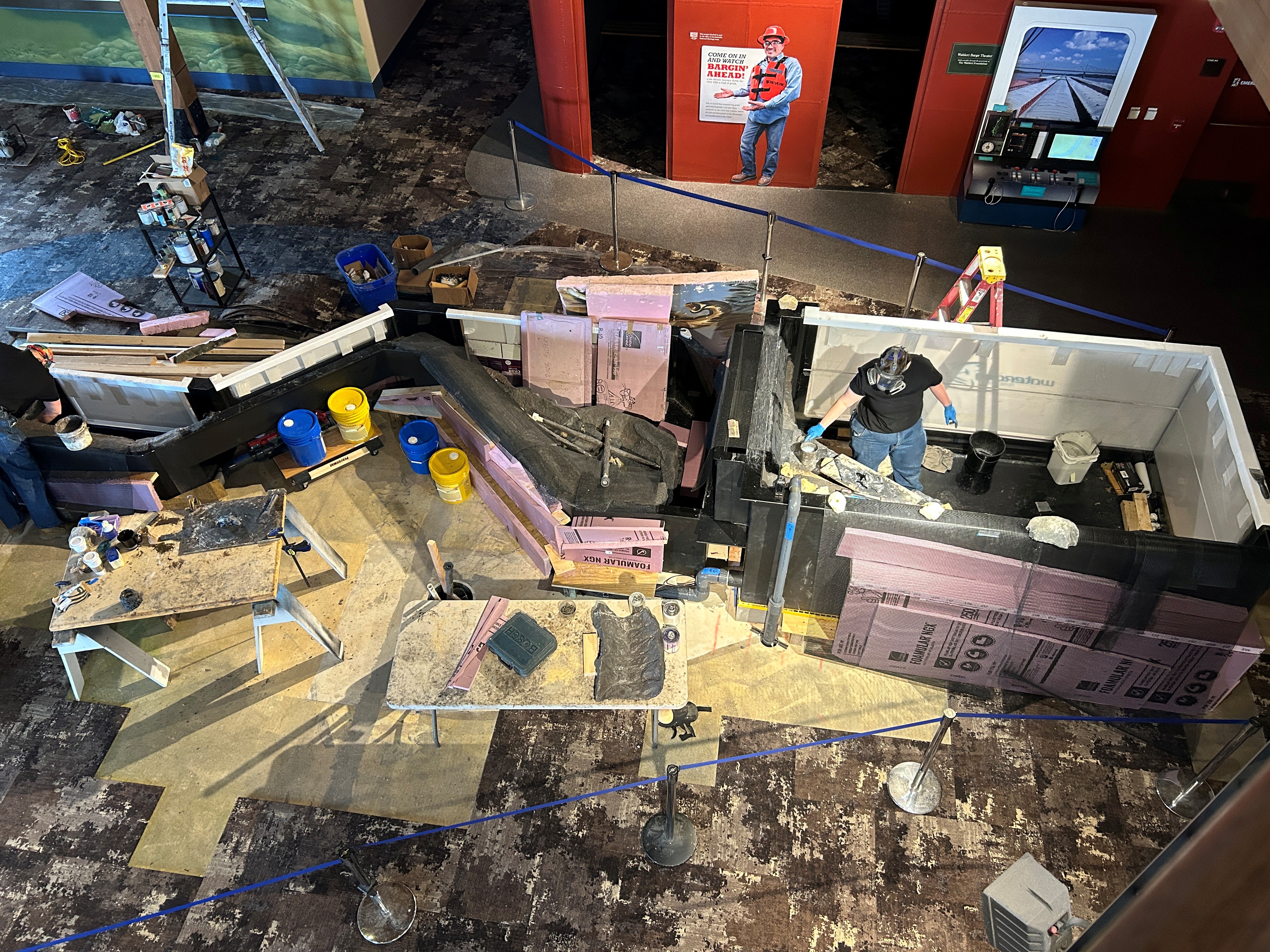
We’ll start from the ground up with the trout stream. It is a very heavy habitat, and when this building initially was built, it actually had a different configuration. Paddlefish was in the middle of the floorplan [and] there was a different stream habitat, so our floor supports in the basement were actually in different locations. That means before we even could do the building of the exhibit, we actually had to reinforce our floor. The first pool, for example, is over 11,000 pounds before we even talk about rock work. From that point on, a lot of that actually is epoxy and concrete. Concrete is on the outside, epoxy is on the inside; epoxy is a lot lighter, a lot more durable, and actually helps the water quality even out faster. Concrete can be fairly acidic and will take the water quality a lot longer to stabilize. So if you were here during the settling process or have seen some pictures, you might have seen these giant floating bags there called bioballs. They actually have healthy bacteria; just like in our guts, water has bacteria, and fish need that to survive, so we actually populate the water with those healthy bacteria, and the epoxy, once it cures, has actually helped speed up that process and made that habitat safer for those animals to go in sooner. The sculpting of the rock work was all done by hand. We mixed all that epoxy by hand, but under that epoxy is actually a PVC frame. It is meshed in and then the epoxy is applied on top, and we took actual silicone molds from limestone rock in the area and we peeled them off and then we used those pads to make stamps to actually give it the limestone look. Same thing with any of our wood textures; we took silicone molds and we went down and made silicone stamps for some of the logs in the exhibits. Once we got all the epoxy done, we went in by hand and did all the detail painting and did all the highlights and deep shadows to actually bring those rocks forward. Some of them actually may look deeper cut than they actually are, which is kind of neat. It gives fish more room to move around.
How would you describe the biggest challenges to the renovations to the MRC?
One of our biggest challenges is also one of our biggest strengths: being flexible. As with any construction project, you really need to be flexible, from supply chains to supply shortages to just changes in construction. For example, we had a material I needed to build almost every single habitat that was out of supply for months and I had to order it months ahead of time. It’s surprising what little things can hold construction back, and no matter how well you plan, sometimes those little things are going to pop up. Another is we hold a lot of accreditations, and those are really valuable. We are accredited by the Association of Zoos and Aquariums (AZA), American Alliance of Museums (AAM), and we are a Smithsonian Institute Affiliate. They make sure we are reviewed by our peers and that we are keeping track of our historical collections the best we can, that we’re representing those animals in our care the best we can. During the renovation process, a lot of time is spent reviewing our documentation and making sure that we are representing that as cohesively as we can and to the best of our abilities.
How does the Interpretive Master Plan help guide or offer some solutions to these challenges?
The Interpretive Master Plan was really helpful for this process; during this process, we actually received an Institute of Museum and Library Services (IMLS) grant which has helped us develop [the plan] further, and it really helped streamline our thought process. It has helped us develop how we want to do our storytelling and has helped not constrict our thought process but emphasize the points that we want to touch on. Especially because we received the IMLS grant early on in this process, it gave us a good running head start on things. It gave us that push and that was really helpful.
With construction, how has visitor flow and the guest experience been impacted?
Another challenge of the renovation has actually been construction impact on guest experience, especially when it comes to large machinery. One of our biggest attempts at negating the impact on that is doing a lot of this in the morning. So we’ve got a lot of morning concrete pours, a lot of evening concrete pours, and scheduling those when guests aren’t here has been really helpful. In the event guests need to pass through those areas, we might ask that they pause as we walk a group through. Even though I'm not necessarily a tour guide, I’m always happy to pick up a group of people and be like, “Come on guys, I’ll take you on over to the William M. Black,” and then I’ll pick up another group and walk them back through a safe path and just making sure our guests know which ways are safe and if they have questions, comments, concerns, just taking the time to answer those as honestly as we can and as direct as we can, and doing what we can do to make sure they’re having the best time as they can.
What has been the most rewarding part of the MRC renovation for you?
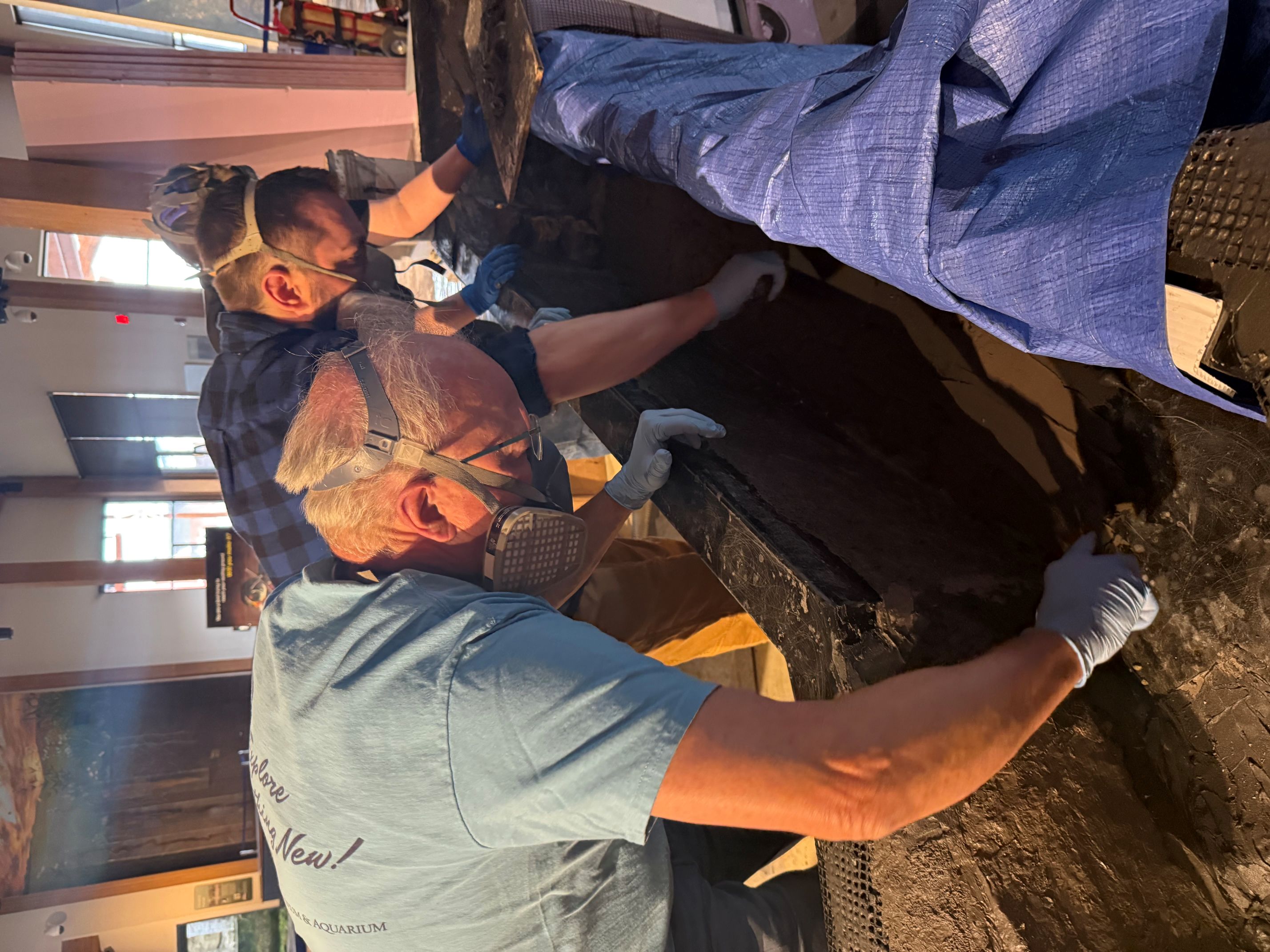
I love how internal this project has been. So much has been internal work and to me that’s been really fun because I’ve been able to work with everyone I see daily here, even when they're not in my department. I’ve been able to teach people how to do the epoxy work, how to do the concrete work, how habitats are made, how [the] signage process goes. I've learned so much about development and fundraising through this process. I’ve never been exposed to a lot of that personally, and that has been a really big learning curve, and that’s actually helped me think a little differently on how I can help my coworkers and how to make their jobs easier, too. We have such a wonderful skill set here and so many people that are passionate about that, and that’s been kind of the most heartwarming thing for me.
What do you hope visitors take away from these new exhibits?
I hope visitors are able to take away from our exhibits and this renovation the fact that even if it’s one person, they can and do make an impact. Even with one interaction, even with multiple interactions, they’re stewards of history, of education, of our watershed, of our ecosystems, of the river. Coming here and supporting this mission, even just that simple act, that one day visit even, it stewards that. I hope people know that they matter in the larger scheme of things.
How has the Preserve the Wonder campaign made this storytelling possible?
The Preserve the Wonder campaign has brought us all together internally as a museum but also, through its story, will bring us together as a community, not just as a town, but also as a whole watershed. The Mississippi watershed is huge; it has a whole population of people, of ecosystems, of animals. If you follow the river through this building, it’s going to touch on each little area, from prairie to swamp areas to our bayou, to paddlefish to limestone driftless regions. There are stories to tell everywhere. It shows that we’re all connected, and that’s one of the great things I think that this campaign is being able to do.
How has the Preserve the Wonder campaign been able to provide the financial resources to complete the projects that you do see as well as the ones that you don’t see?
The Preserve the Wonder campaign has made so much of this visual storytelling possible, but it’s also made the physicality of it possible. For every graphic you see, there’s a printer behind it. For every rock you see sculpted, there is a support structure underneath. For every new habitat you see, there is pipework and electrical work and life support in the basement. There is so much facilities work behind the scenes from staff, from contractors, from just materials that go into making all this, that the Preserve the Wonder campaign makes that all possible as well. You can’t have beauty without that aspect as well. You need both of those facets to make it all happen.
